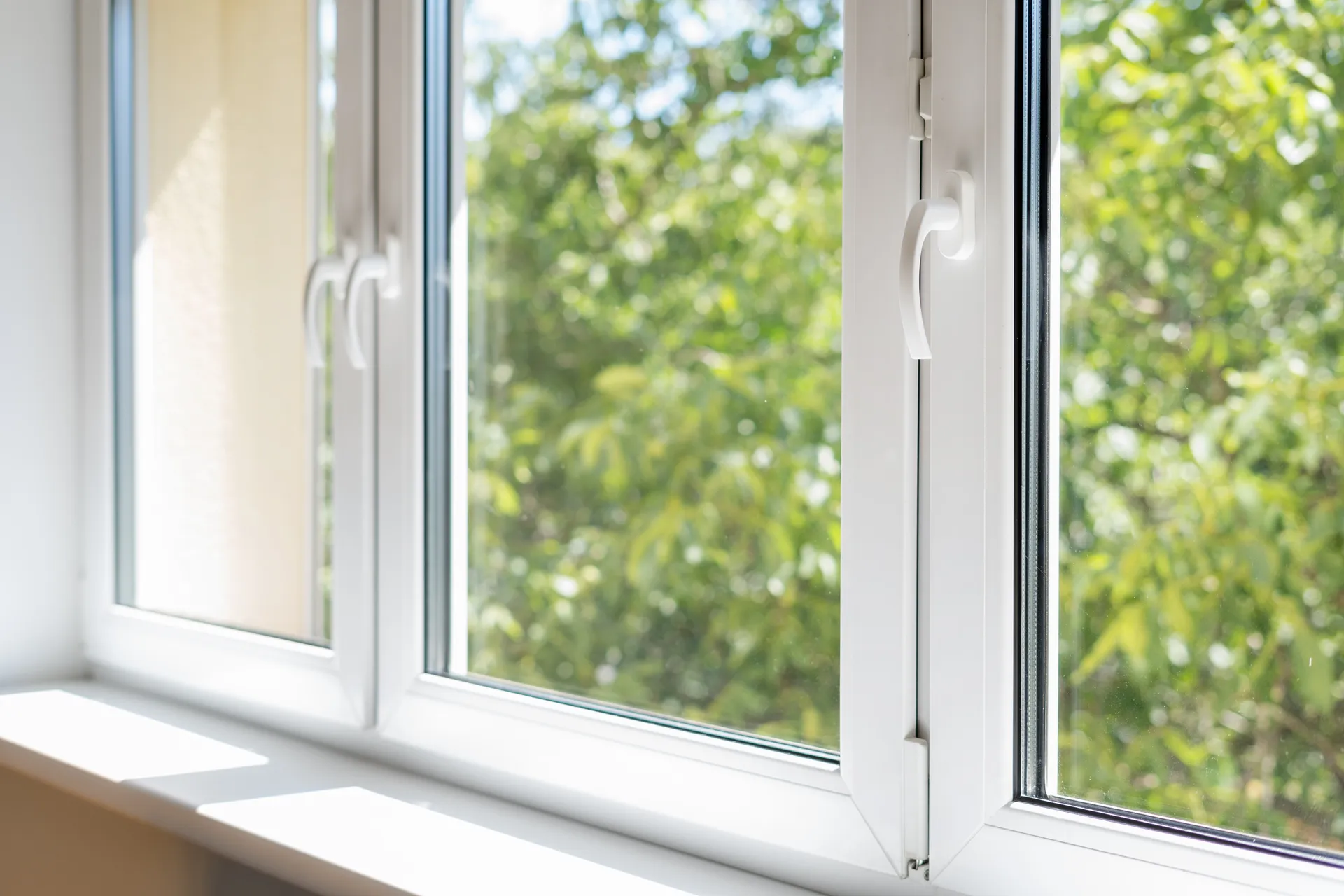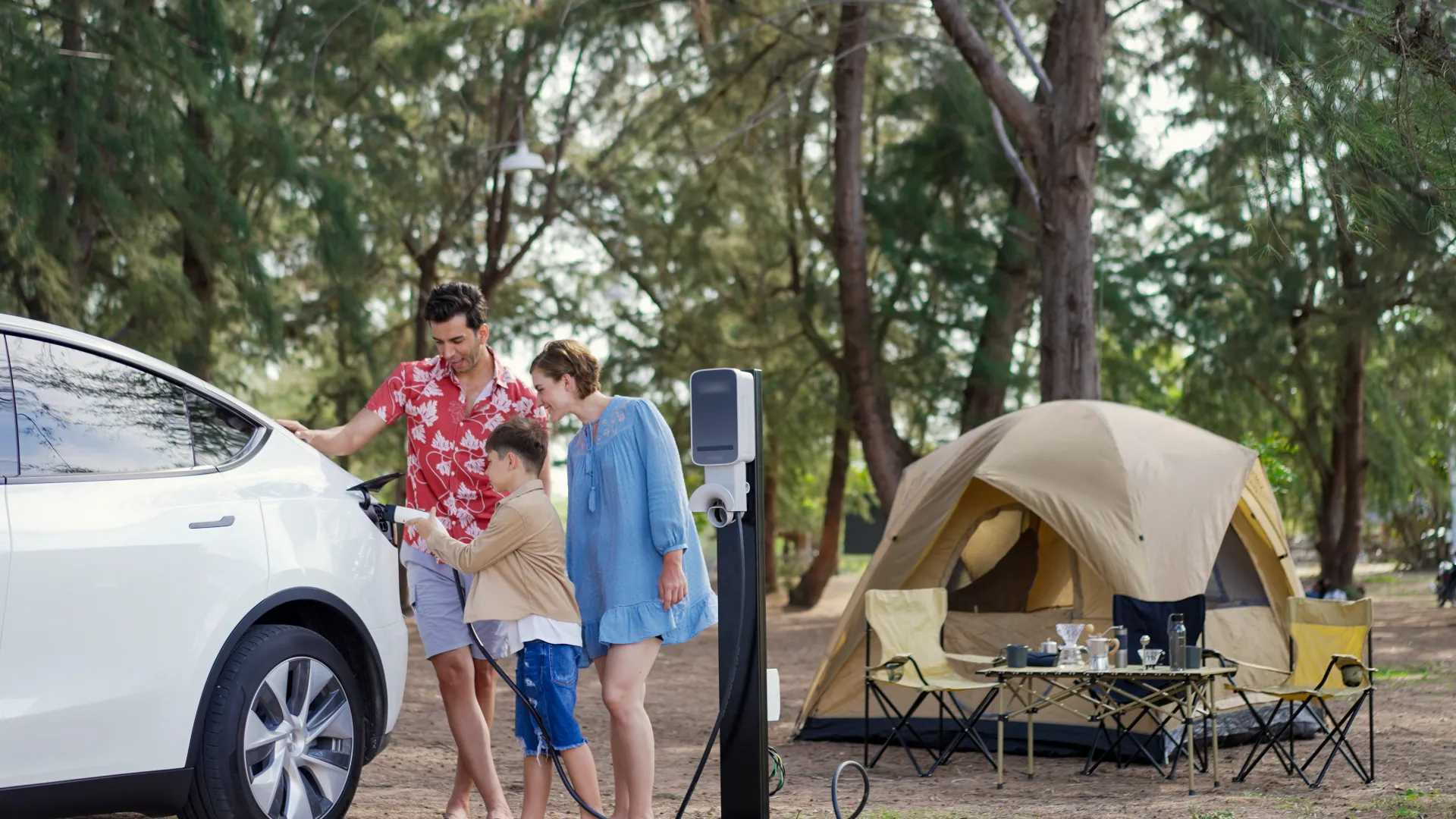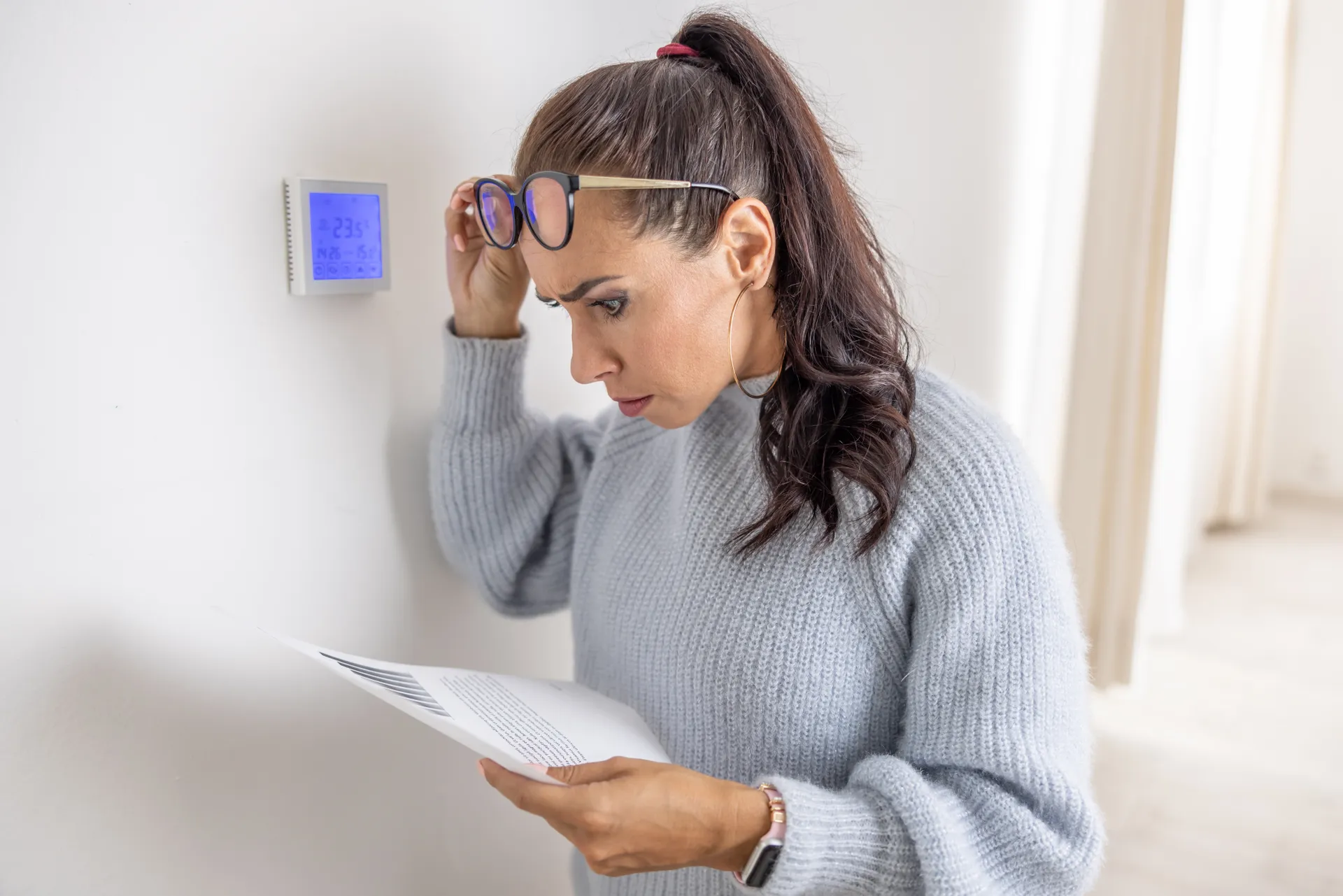Comprehensive guide to EV charging stations in Australia

Australia is on track to hit an annual milestone of 100,000 electric vehicle (EV) sales for 2024. Find out where to charge your EV and what to look for.
The dawn of electric vehicles (EVs) has introduced a paradigm shift in how we approach travel, particularly in Australia, a vast continent known for its iconic road trips.
Whether you’re an EV enthusiast, a prospective buyer, or someone merely curious about the e-revolution, you might have questions about driving ranges, charging times, and the accessibility of EV charging stations across the country.
This guide will answer all of your EV charging questions and help you plan a seamless journey whether you’re road-tripping across the country or simply driving to work.
Understanding EVs and charging stations
With the sharp surge in EV sales in Australia, many are adapting to this new way of travelling. But there’s a lot to consider: how long does it take to charge your EV, what range does your EV have, where is your nearest charging station and how do they work?
The answer to these questions significantly influence your travel plans, so it’s a good idea to get familiar with your EV and its charging capacities to ensure a smooth, stress-free journey.
Let’s start at the beginning; there are three primary types of EV charging stations:
Level 1/Mode 2 – Slow Charging: This method of charging uses an existing powerpoint (10-15 Amp, single phase) in combination with a specialised cable that should be provided with your EV. These charge points are only found in domestic homes. On average, you’ll see 10-20km of range per hour plugged in — this is good for topping up your daily use but it will not fully recharge an EV overnight.
Level 2/Mode 3 – Fast Charging: This type of charger is usually installed in homes, apartment blocks, hotels and workplaces. It consists of a dedicated AC EV charger at up to 22kW (32 Amp, 3-phase). This method of charging will add 40-100km of range per hour of charging and can deliver a full recharge overnight.
Level 3/Mode 4 – Rapid Charging: You’ll come across these charging stations at road-side locations to provide faster recharging with a dedicated DC EV charger at power levels from 25kW to 350kW (40-500 Amp, 3-phase). At the high end of the scale you’ll enjoy a full recharge in 10-15 minutes, while at the lower end you could see 150km of range added per each hour your vehicle is plugged in.
Why two names for each type? They come from different standards and terminologies used to categorise charging methods: Level 1, Level 2, and Level 3 refer to the North American classification; Mode 2, Mode 3, and Mode 4 correspond to the European classification. In Australia, the European classification is more commonly used whereas the “Mode” terminology is used in more technical contexts.
An overview of EV chargers in Australia
With Australia on track to have more than 100,000 electric vehicles on the roads in 2023, charging stations have been popping up across all states and territories.
According to the Electric Vehicle Council’s (EVC) 2023 report, there are 558 high-power public charging locations in Australia, a 57% increase from 2022. It’s worth noting that many of these locations have multiple charging bays in place, so that multiple vehicles can charge at the same time.
The table below, sourced from the EVC report, outlines the number of fast and ultrafast charging points across each state and territory. NSW is the state with the highest number of high-power charging stations with 174.
| State / Territory | Fast (24kW - 99kW DC) | Ultrafast (100kW DC +) | Total |
| ACT | 6 | 3 | 9 |
| NSW | 131 | 43 | 174 |
| NT | 3 | 0 | 3 |
| QLD | 93 | 16 | 109 |
| SA | 42 | 9 | 51 |
| TAS | 31 | 5 | 36 |
| VIC | 97 | 32 | 129 |
| WA | 36 | 12 | 48 |
| Grand total | 438 | 120 | 558 |
Source: The Electric Vehicle Council
This raises the question – are there enough charging stations across Australia to support the rise in EV sales? Arguably, there aren’t enough EV chargers across all 7.7 million square kilometres of Australia. But, it’s not just about the number of charging stations.
For most buyers, charging at home is sufficient to support their lifestyle and daily needs. While you need to head out to fill your vehicle up with fuel, you can charge your EV right in your driveway. So if you aren’t planning on taking regular drives across the country, an at-home charging point should be sufficient to get you to work, the shops and even on the occasional weekend road trip.
Looking ahead, there are several plans in place for the rollout of high-power public charging stations to continue to support EV owners. Major projects are in progress such as:
- The federal government’s major region-linking NRMA charging network to fill blackspots in remote and regional areas
- The RAA’s South Australian EV network installation — with more than 140 locations planned to open by early 2024
- Tesla unlocking some Supercharging sites to be available to all EV models
- bp pulse , a plan which sees the introduction of 100,000 charging points globally by 2030, with 600 of these to be located in Australia by 2025.
Recharge while restocking your pantry
We’ve already seen the rollout of EV charging locations into burger restaurants, bottle shops, shopping centres and even attached to old power poles! A few supermarkets such as Woolworths and Coles have also installed charging points in their car parks.
There have been discussions in the media encouraging more major Australian supermarkets to invest in EV charging stations. This would not only give supermarkets a competitive and environmental advantage but would also allow shoppers to leave their car on charge while stocking up on their weekly groceries.
Aussie families are often short of time and most live within a 1.5km radius of their local supermarket, making this option highly desirable. Plus, Australia has over 4,000 supermarkets in every region, town and suburb across the country making them great sites for charging stations.
Maps of EV charging stations in Australia: locating charging points near you
Although knowing that there are plenty of public EV charging stations in Australia creates peace of mind for the driver, how can you easily find out where they are located? No one enjoys running out of power halfway to the beach. Fortunately, there are a plethora of tools available to help make your journeys effortless.
Plugshare, EVC, NRMA, Tesla, Get Electric, bp Pulse and JET Charge all provide interactive maps via their websites and downloadable apps to help you locate charging points and plan your route accordingly.
Teslas’s app not only helps you locate a Tesla Supercharger, but also lets you monitor your charge status and get a notification when your car is ready to get back on the road. Enter your destination into your Tesla touchscreen and its Trip Planner will automatically calculate your route, highlighting Supercharger points along the way. The app is also smart enough to consider your driving style, outside temperature, traffic, charge point availability and more!
Here are the best interactive maps you can bookmark:
EV Charging costs in Australia
If you’re wondering: ‘How much will it cost to charge my EV?’ The answer is: ‘It depends’. The cost of charging an EV in Australia is dependent on the source of electricity, battery size, at-home electricity costs and the time of day you choose to charge.
Which Car outlines the cost per kWh to charge at various charging points across the country.
| Public charging provider standard pricing rates (August 2023) | |
| Chargefox 50kW DC | $0.45 per kWh |
| Chargefox 350kW DC | $0.60 per kWh |
| Evie Networks 50kW DC | $0.50 per kWh |
| Evie Networks 350kW DC | $0.65 per kWh |
| BP Pulse 75kW DC | $0.55 per kWh |
| Ampol AmpCharge 150kW DC | $0.69 per kWh |
| Tesla Superchargers 150kW/250kW DC | ∼$0.43 to $0.69 per kWh* |
*(∼$0.65 to $0.81 per kWh for non-Tesla EVs without membership at select trial locations). Tesla uses variable pricing, which changes depending on the time-of-day and station demand. ‘Idle fees’ also apply when the vehicle has finished charging, but is still plugged in after five minutes – penalising $0.50 or $1.00 per minute when the location is 50 per cent or fully occupied respectively.
The cheapest EV charging network in Australia is Chargefox at $0.45 per kWh for a 50kW DC charge port. Chargefox was founded in 2018 and is Australia’s largest EV charging network. Someone plugs into a Chargefox network every minute! Simply download their app to find, use and pay for a charging station. You can find their charging points at McDonalds, Coles, Intercontinental hotels and more.
The good news is that many public EV charging stations across the country offer free charging. These tend to be the slower AC chargers and are often located in public car parks where the only cost to you is the fee to park your car. Some hotels and restaurants also offer free charging to their guests.
The most cost effective, reliable and convenient way to recharge your EV is at home.
According to the Australian Government’s Energy Made Easy tool, the average off-peak pricing for time-of-use plans can range between $0.20 to $0.30 per kWh. This is based on charging from 10pm to 7am and varies depending on your electricity provider and the specific plan you have.
Drive outlines the average electricity charge to plug in your vehicle at home. These calculations are based on charging an EV with a 60kWh battery on the flat regulated tariff in each state.
| State | Reference rate – c/kWh (flat rate) | Charge cost (60 kWh battery) |
| ACT | 30.3270 | $18.20 |
| NSW | 31.2363 | $18.74 |
| QLD | 25.8170 | $15.49 |
| SA | 40.1830 | $24.11 |
| VIC | 24.4440 | $14.67 |
Source: Drive.com.au
Charging at home is cost effective but it’s also convenient. You can schedule an AC charging timer on your EV model or wall box so all you need to do is plug in your vehicle when you get home.
If you have solar panel systems in your home then you’ll enjoy free charging whenever the sun is out! Some smart AC wall box chargers can even be set to automatically charge when there’s solar generation.
The charging process: what to expect
While it is true that charging an EV takes longer than refuelling a standard petrol or diesel car, there are many advantages to the electric way of life. You can charge your EV at locations that might well fit into your daily routine — at home, at work, when you shop or even while you enjoy a burger. Tired on a long journey? Recharge your car, and enjoy a coffee and snack.
While it is true that charging an EV takes longer than refuelling a standard petrol or diesel car, there are many advantages to the electric way of life. You can charge your EV at locations that might well fit into your daily routine — at home, at work, when you shop or even while you enjoy a burger. Tired on a long journey? Recharge your car, and enjoy a coffee and snack.
How long does it take to recharge?
NRMA gives an approximate guide to how many kilometres can be gained per hour and per 15 minutes of charging:
| Charge rate (kW) | Range gained per hour | Range gained per 15 minutes |
| 2.2 | 15km | 3.75km |
| 3.7 | 25km | 6.25km |
| 7.7 | 40km | 10km |
| 11 | 65km | 16.25km |
| 22 | 130km | 32.5km |
| 50 | 300km | 75km |
| 150 | 900km | 225km |
| 350 | 2,000km | 500km |
Source: NRMA
It’s worth remembering that there are a lot of factors that will influence charging time:
- Charging level and mode: refer back to the first section of this article for the different types of charging points
- Charging points, plugs and cables: some cables and ports are designed to handle higher power outputs than others
- On-board charging capacity and battery size: EVs come with differing maximum charge rates
- Battery state of charge (SoC): typically when a battery SoC is on the empty side the charging rate can be faster. When the battery’s SoC reaches 80% or above, it takes longer to charge
- Battery temperature: charging an EV in very cold or very hot conditions can reduce the charging rate
Let’s make things more tangible with a real life example:
Sarah drives a Tesla Model 3 and charges her car at home using a Level 2 charger, gaining around 40km of range per hour. When she plans a road trip, she checks her battery's state of charge and temperature to ensure an efficient charge, if her battery's SoC is below 80%, she knows the charging rate will be faster. On a regular working day, she plugs in her Tesla overnight, and it's ready for her commute the next morning.
I’m fully charged, how far can I drive?
The driving range of EVs (or the maximum distance they can travel on a fully charged battery) can vary significantly. Influencing range factors include type of car, average energy usage, charging method used, age of the battery, individual driving style and outside temperature. In Australia, most EVs can travel between 250 and 300km on a single charge.
Tesla’s Model S Plaid has the longest range, with other models like BMW’s iX, Kia EV6, and Audi e-tron also offering extended ranges.
To put this into context, consider the average Australian commute distance, which is around 40km round trip. Using a standard Level 2 charger at home, most EVs can be fully charged overnight, providing more than enough range for a typical daily commute and errands. Even a quick 15-minute charge can add up to 10km of range, giving additional flexibility.
Connecting the average EV driving ranges back to the charge-time table supplied by NRMA, it becomes clear that driving an EV is not only accessible to most Australians but also practical for daily use. If you’re looking for an easy way to tell if an EV will meet your needs, simply look at the manufacturer’s claimed range and consider your lifestyle and driving habits.
FAQs – EV chargers in Australia
Are EV charging stations free in Australia?
Throughout Australia, many public EV charging points provide free charging. You’ll usually come across these free stations in public parking areas, where the main cost is the regular parking fee.
- Understanding EVs and charging stations
- An overview of EV chargers in Australia
- Recharge while restocking your pantry
- Maps of EV charging stations in Australia: locating charging points near you
- EV Charging costs in Australia
- The charging process: what to expect
- FAQs – EV chargers in Australia
- Conclusion
Source: Flarehr.com








